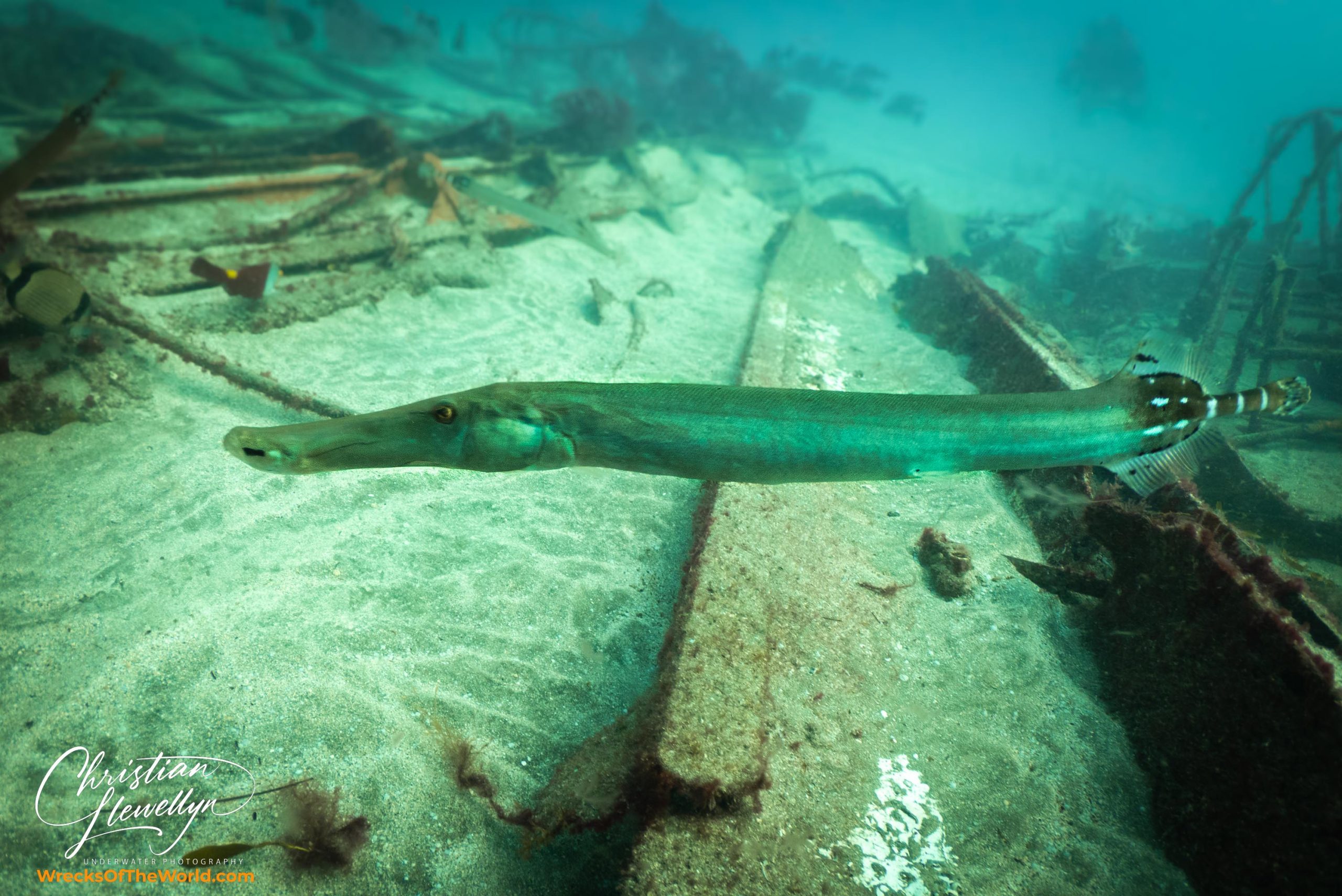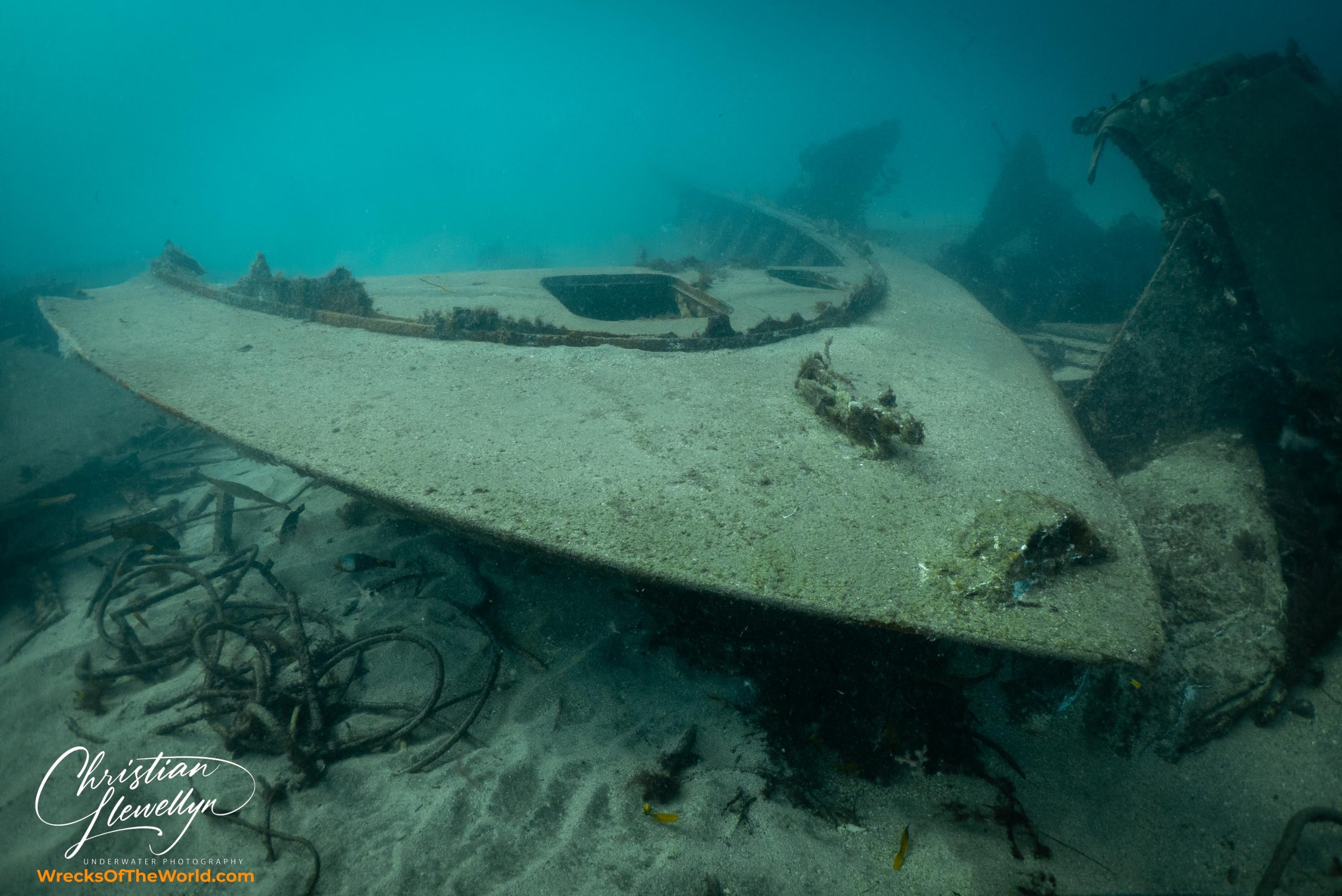Meteor II Wreck: Rich Marine Life Thanks To Russian Ferry
- Written:
- By Christian Llewellyn
Some of the links on this page may be affiliate links. If you click on them and make a purchase, we may earn a small commission at no extra cost to you. This helps us continue our work—thank you for your support!
Introduction to the Meteor II wreck
The Meteor II wreck presents a unique diving opportunity off the coast of Gran Canaria. This Russian-built hydrofoil ferry now lies submerged near El Pajar, close to a local cement factory. This site, a hub for divers aiming to explore sunken wrecks and vibrant marine ecosystems, forms part of the broader allure of Gran Canaria’s underwater adventures. Dive Meteor II Gran Canaria offers biological treasures, making it a prime target for wreck divers and underwater photographers.

The Story Behind the Meteor II
The Meteor II, a ferry from the Meteor series, was operational as a passenger carrier before its unfortunate demise in November 2003. Amid preparation for an Atlantic crossing, a storm swept through Arguineguin harbor causing the vessel to break loose and collide with nearby rocks, resulting in critical damage at its stern. After this incident, the damaged ferry was moved near the El Pajar area where it eventually sank. Resting at a maximum depth of 18 meters, the wreck is now broken up due to natural decay and the force of periodic storms.
Today, the site is not just a submerged structure but a thriving underwater habitat. The Meteor II wreck fosters a rich marine life ecosystem, thanks to its location in currents that are rich in nutrients. Divers can encounter species such as barracuda, grunt fish, common stingrays, and the more elusive butterfly rays and angel sharks. Over time, it has emerged as a favored location for diving in Gran Canaria, providing spectacular scenes for underwater photographers and serving as an effective artificial reef amidst the island’s vast maritime offerings.

The Stats: Depth, Conditions & Accessibility
25m
Minimum Depth
40m
Maximum Depth
Boat Dive
Dive Type
30m
Visibility
ALL YEAR
Season
18°C - 25°C
Water Temp
Where Is The Meteor II?
The Meteor II wreck is located off the coast of Gran Canaria, one of Spain’s Canary Islands. This former ferry was deliberately sunk in 2003 to create an artificial reef and dive site. It lies in an area accessible mainly by boat due to its depth and the distance from the shore. The closest significant port is in Las Palmas, the capital of Gran Canaria, which provides ample opportunities for renting dive gear and booking guided dive tours.
Travel to Gran Canaria typically involves flying into Gran Canaria Airport (LPA), which is well-connected to major European cities. From the airport, it’s possible to rent a car or take public transportation to reach various coastal towns near the dive sites. Las Palmas, being a major hub, has numerous accommodations, dive shops, and other facilities catering to tourists and divers.
My Experience Diving The Meteor II
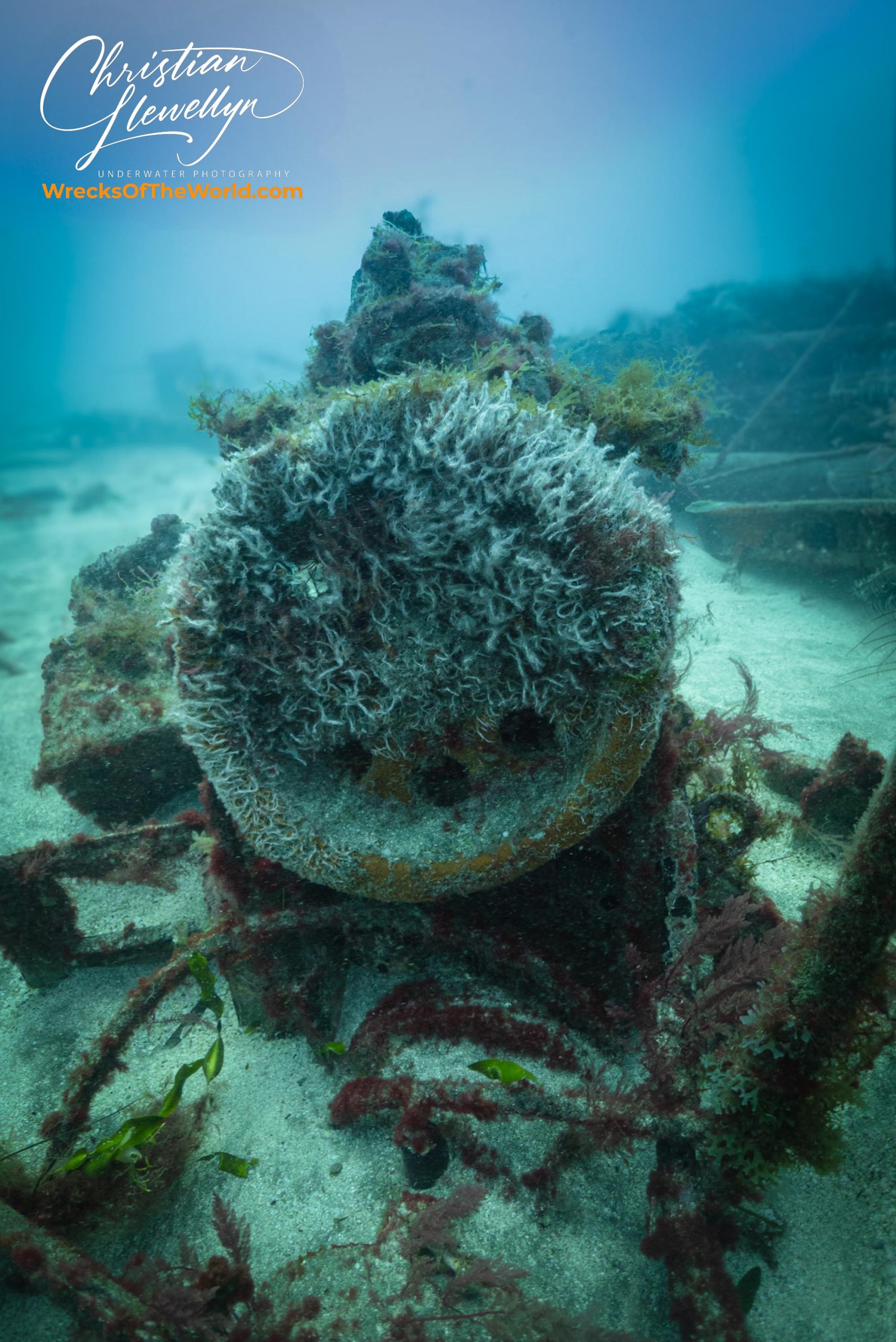
Embarking on the Dive Meteor II in Gran Canaria was an unforgettable journey into the deep. The dive began with a boat ride from the bustling shores of Gran Canaria to the site of the submerged Meteor II, a ferry that found its watery resting place not too far from the island. The dive company facilitated a thorough briefing, ensuring all safety measures and interesting aspects of the wreck were well understood before we geared up.
Entry into the water was via a giant stride from the side of our boat, an exhilarating start to the adventure. Underwater, the visibility was commendable, offering clear views of the massive ferry as it loomed out of the blue. As we navigated around and through the wreck, the shadows and light played off the deteriorating surfaces, creating an eerie yet mesmerising atmosphere, perfect for the keen underwater photographer.
The journey back to the surface was smooth, filled with excited chatter about the marine life and the eerie beauty of the wreck. Back on the boat, our group shared images and experiences over a warm cup of tea, making plans for future dives. Diving the Meteor II wreck is not just a dive; it’s a comprehensive glimpse into the life and eventual legacy of a once-active vessel.
My Experience Photographing the Meteor II
Photographing the Meteor II wreck, a notable dive site in Gran Canaria, was an exhilarating experience that combined the challenge of underwater photography with the mystique of a sunken ferry. The visibility was favourable, essential for capturing the eerie yet majestic essence of wrecks. The ambient light filtering through the water beautifully highlighted parts of the wreckage, creating dramatic contrasts and shadows. This dive site, replete with intrigue and marine biodiversity, offered countless photographic opportunities from the sprawling decks to the encrusting marine life.
Navigating my way around the Meteor II, I focused on the intricate textures and patterns formed by years underwater. The play of light through the broken windows and the schools of fish that have made the wreck their home provided dynamic and vibrant scenes. One of my favorite photos captured the stern of the wreck, richly adorned with soft corals and sponges, with the background subtly illuminated by natural sunlight, resulting in a captivating composition that truly portrayed the spirit of Meteor II.
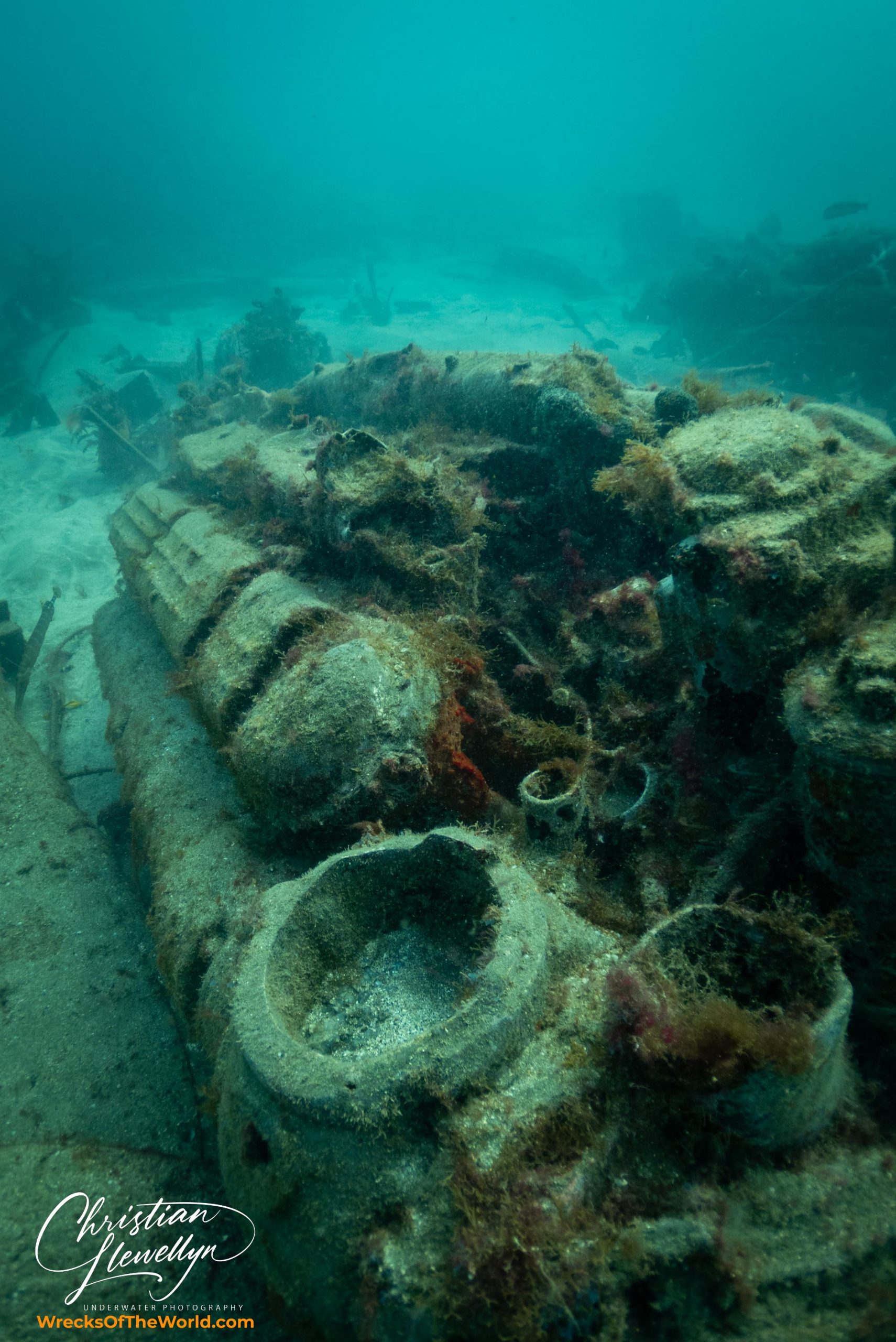
What You’ll See: Wreck Features & Marine Life
Throughout the Meteor II wreck dive in Gran Canaria, one is treated to a bustling ecosystem teeming with life. Barnacles and algae have carpeted sections of the wreck, providing a thriving habitat for diverse marine species. Schools of colourful fish dart through the broken panels, playing hide and seek with divers and their cameras. Visibility generally allows for clear views, making each dive a vivid experience for both new and seasoned divers.
Majestic rays and curious octopuses are commonly sighted around the structure, adapting to the crevices and shadows of the wreck. The stark contrast between the Meteor II’s human-made angles and the organic forms of its marine inhabitants highlights the transformative power of nature, turning a sunken man-made object into a vibrant underwater habitat. For those interested in wreck photography, the dive offers endless opportunities to capture the eerie and the beautiful, weaving the history of the Meteor II wreck with the present biodiversity.
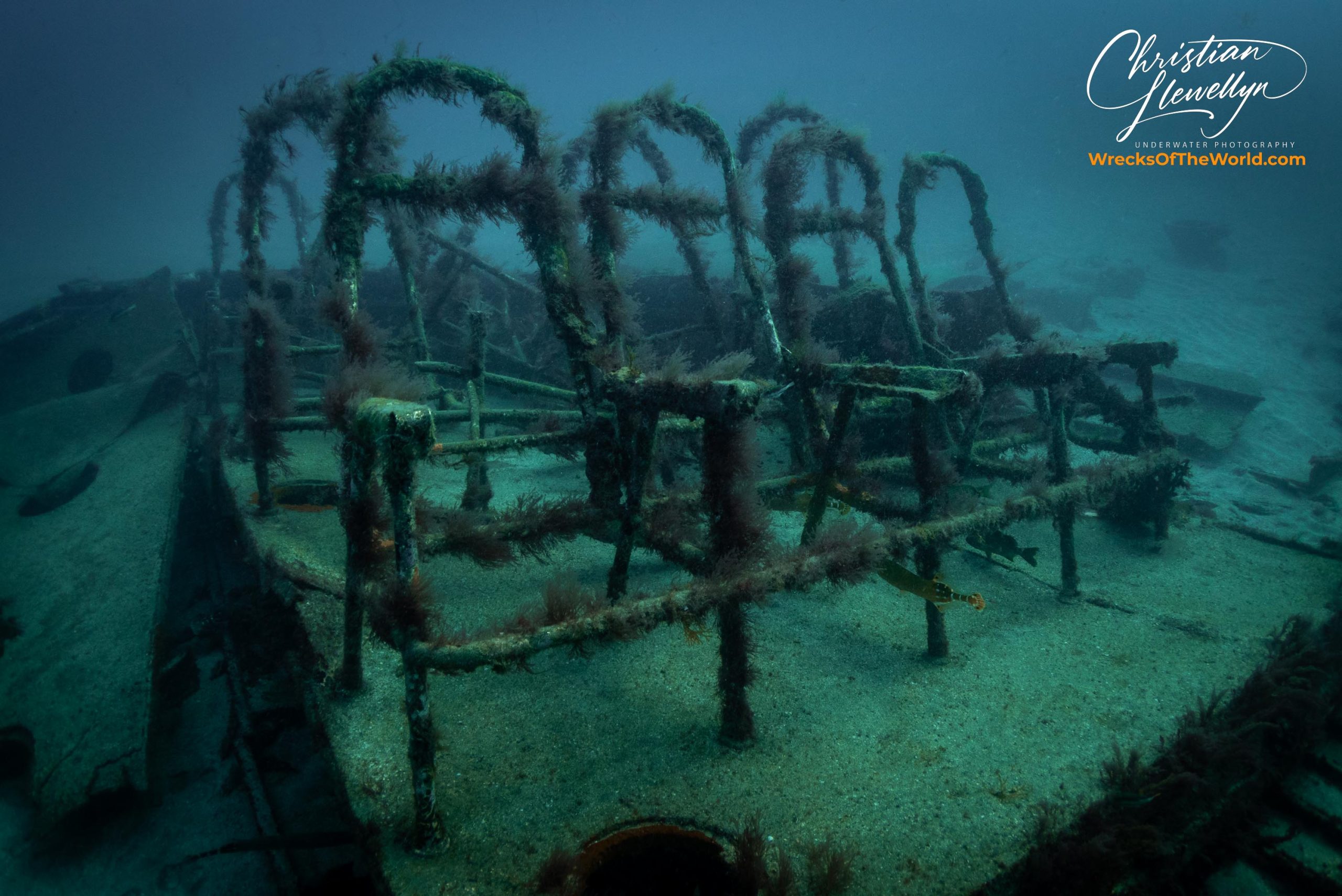
Recommendations for Diving the Meteor II
- Ensure you are adequately certified for wreck diving before participating in such dives.
- Familiarize yourself with the layout and history of the wreck to enhance safety and appreciation of the site.
- Check and double-check all equipment, especially lights and backup air systems, as wreck diving often involves enclosed spaces.
- Always dive with a buddy and maintain close communication, particularly in areas with low visibility or tight spaces.
- Pay attention to depth and time to avoid decompression sickness, especially given the potentially deeper areas of a wreck.
- Be cautious of sharp edges and unstable structures within the wreck. Minimise contact with the structure to preserve both the site and diver safety.
- Use a dive line or reel when penetrating the wreck to ensure a safe return to the entry point.
- Keep a controlled buoyancy to avoid kicking up sediment, which can drastically reduce visibility.
- Respect maritime heritage by not removing artefacts or disturbing the wreck site.
- Monitor your air supply closely, considering the deeper or more complex nature of wreck dives.
Tips for Photographing the Meteor II
1. Utilize natural light to enhance your shots. The way light penetrates water and illuminates the wreck can create breathtaking effects, particularly in the clearer waters of Gran Canaria.
2. Pay attention to your camera settings. Lower ISO levels and slower shutter speeds can help in capturing sharp, clear images in the complex light conditions inside the wreck.
3. Invest in a good strobe or underwater light to reveal the vivid colors and textures of the wreck, which are often muted under natural underwater lighting conditions.
4. Explore different angles and perspectives. Photographing the wreck from unusual angles can yield unique and memorable images, showcasing the vastness or specific details of the wreck effectively.
5. Be patient and observant. Marine life, such as schools of fish or lone critters, can add life and context to your wreck photos, so wait for the perfect moment when they interact with the environment.
6. Maintain good buoyancy control. This helps not only in protecting the underwater environment but also in stabilizing your shots, particularly in tight spaces within the wreck.
7. Document safely but thoroughly. Always prioritize safety when exploring wrecks by not venturing into potentially hazardous areas without proper training and equipment. However, explore as much as you safely can to capture a variety of images.
Practical Dive Info & Booking a Trip
To explore the Meteor II wreck in Gran Canaria, there are several reputable dive operators such as Bluexplorer, Dive Academy Gran Canaria, and Top Diving Gran Canaria. Prices for a typical wreck dive to the Meteor II range from approximately €60 to €100, including gear rental and guide services. Conservation is crucial in maintaining the beauty and integrity of wreck sites; divers are encouraged to practice ‘no touch’ diving and observe all marine life respectfully. Always ensure to follow guidelines and respect the delicate underwater environment to help preserve it for future generations. With the right preparation and a respect for nature, diving the Meteor II wreck can be a breathtaking and fulfilling adventure.
My Rating & Final Thoughts
Diving the Meteor II wreck off the coast of Gran Canaria was an unforgettable experience that vividly showcases the allure of exploring sunken histories amidst vibrant marine life. Each dive into the depths offered a new perspective on this massive ferry’s past, intertwining with the natural world in a serene, blue water embrace. The structure, festooned with aquatic flora and bustling with schools of curious fish, provides an extraordinary backdrop for photography and a profound sense of connection to the ocean’s hidden narratives. Whether you are a seasoned diver or a curious beginner interested in the mystique of submerged vessels, the Meteor II site in Gran Canaria is a compelling destination that enriches both skill and soul.
8/10
Frequently Asked Questions (FAQs)
Diving conditions at the Meteor II site are generally good, with visibility ranging from 10 to 30 meters depending on weather conditions. Water temperatures vary from 18°C in winter to 25°C in summer, making it comfortable for diving with appropriate wetsuits.
The best time to dive the Meteor II is during the summer months from June to September when water temperatures are warmer and visibility is often at its best. However, diving can be enjoyed year-round with the right thermal protection.
Divers at the Meteor II can expect to see a variety of marine life including moray eels, barracudas, angel sharks, and numerous species of smaller fish. Occasional sightings of rays and octopuses also enhance the diving experience.
Diving the Meteor II requires at least an Advanced Open Water certification due to its depth, which ranges from 20 to 30 meters. It is also advisable for divers to have experience in wreck diving.
When diving the Meteor II, it’s important to be mindful of strong currents, monitor your air supply closely due to depth, and always dive with a buddy. Knowledge of wreck penetration is crucial if planning to enter the wreck.
There are several reputable dive operators on Gran Canaria that offer trips to the Meteor II. It’s best to choose one that provides experienced guides who are familiar with the wreck and its surroundings.
For diving the Meteor II, a standard scuba setup is necessary along with a dive computer and a good underwater flashlight if you plan to explore more enclosed parts of the wreck. A wetsuit of appropriate thickness for the season is also recommended.
Respectful diving behaviors include not touching or taking anything from the wreck, being cautious not to disturb the marine life, and avoiding penetration of the wreck unless properly trained. Being aware of your buoyancy to avoid stirring up sediment is also important.
The Meteor II was a hydrofoil ferry intentionally sunk in 2003 to create an artificial reef and dive site. Its accessibility and abundance of marine life make it an attractive spot for divers, while also serving as a habitat for marine organisms.
Diving the Meteor II offers a unique blend of excitement and solemnity as divers explore the sunken vessel and encounter marine life that has reclaimed it as home. The experience can be both thrilling and reflective, appreciating the cycle of life in the ocean.
Some of the links on this page may be affiliate links. If you click on them and make a purchase, we may earn a small commission at no extra cost to you. This helps us continue our work—thank you for your support!


